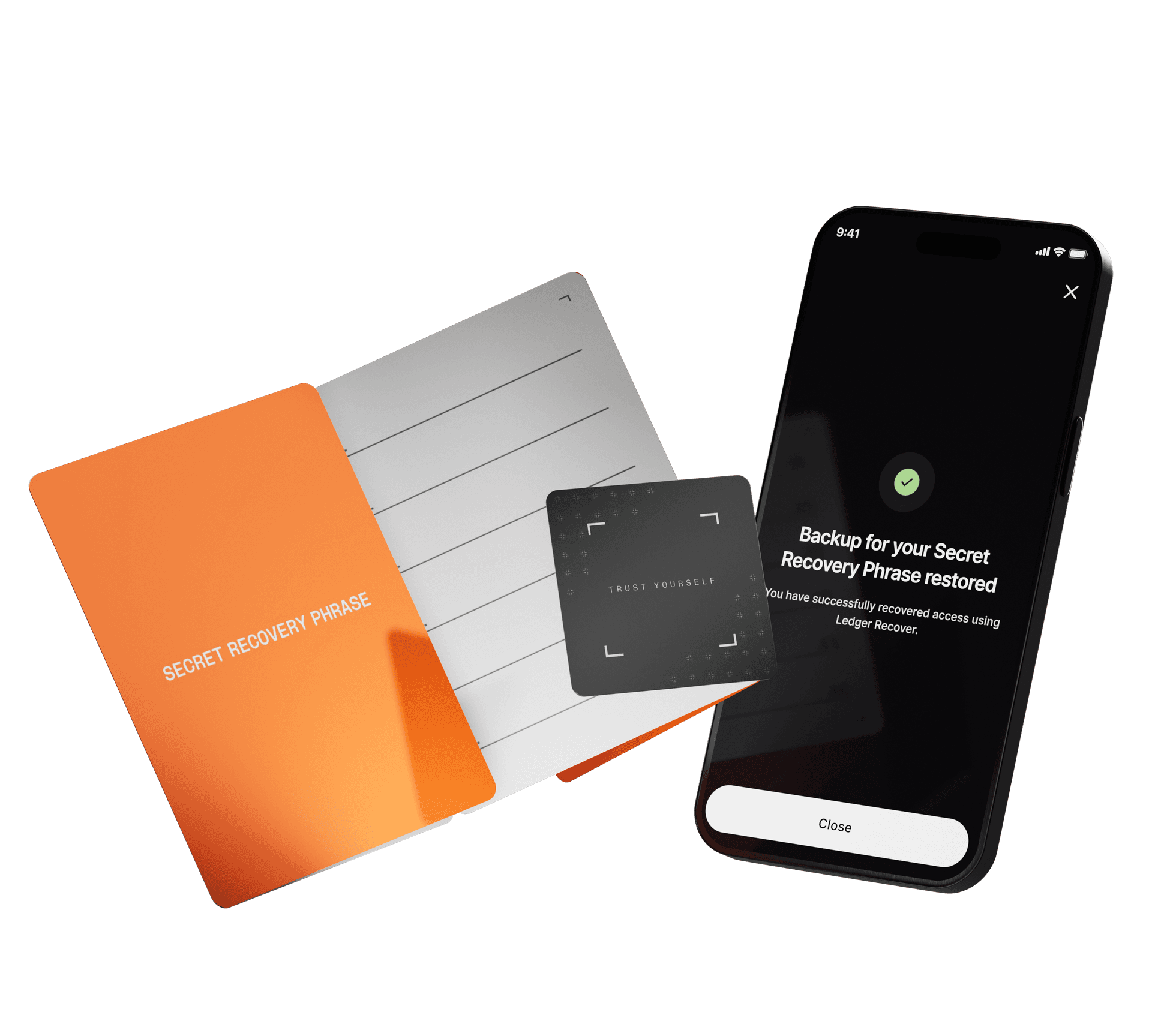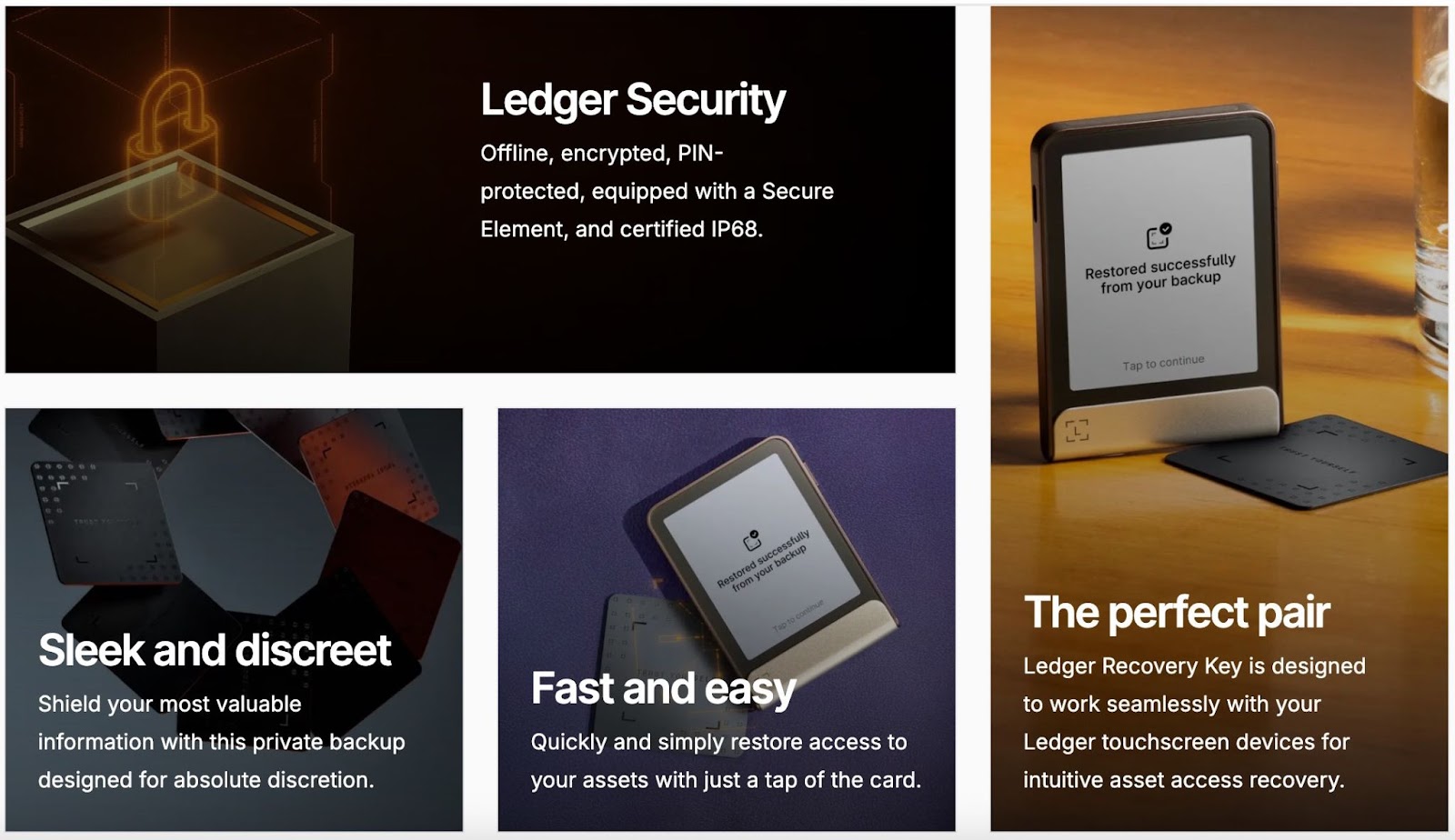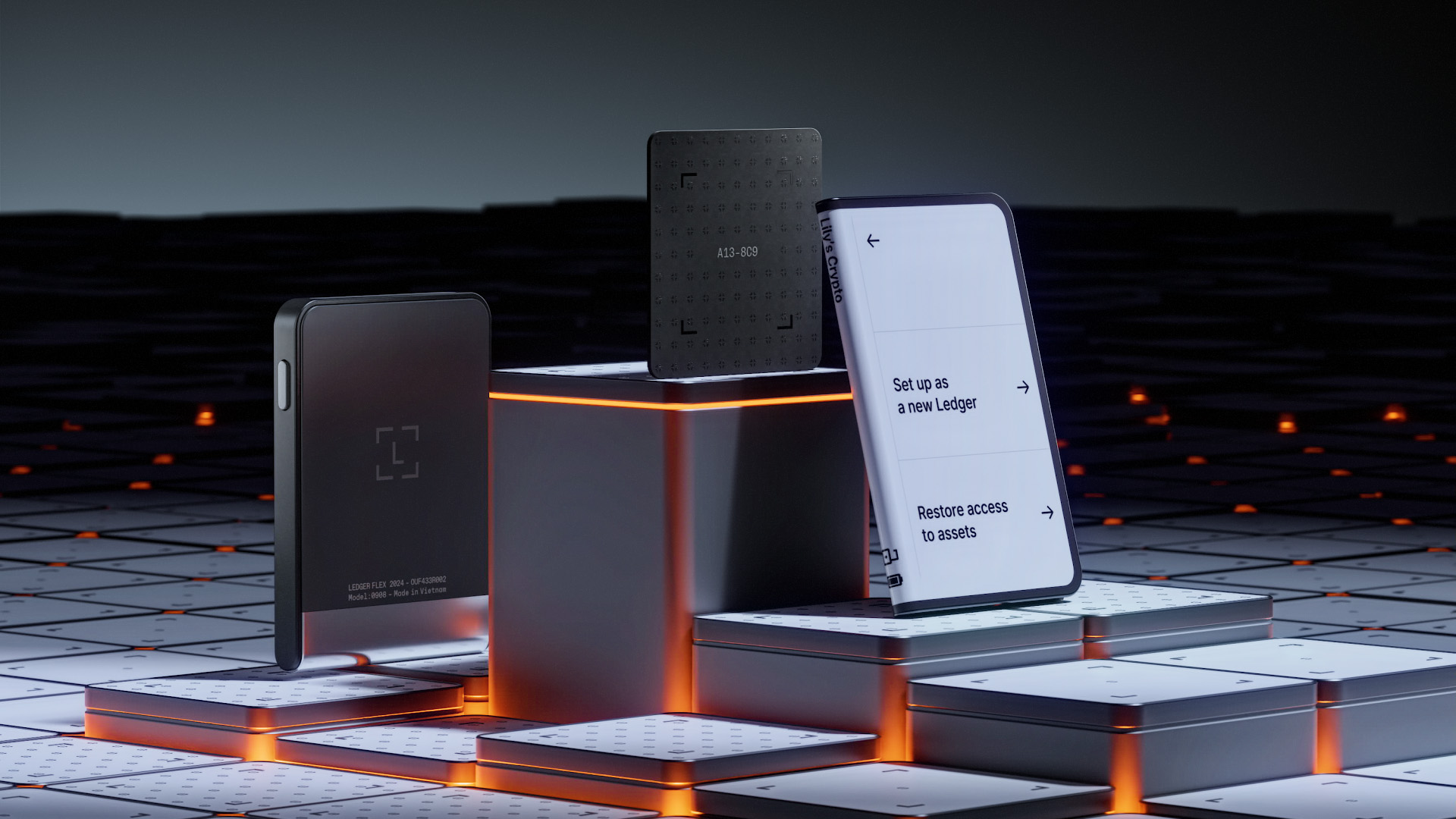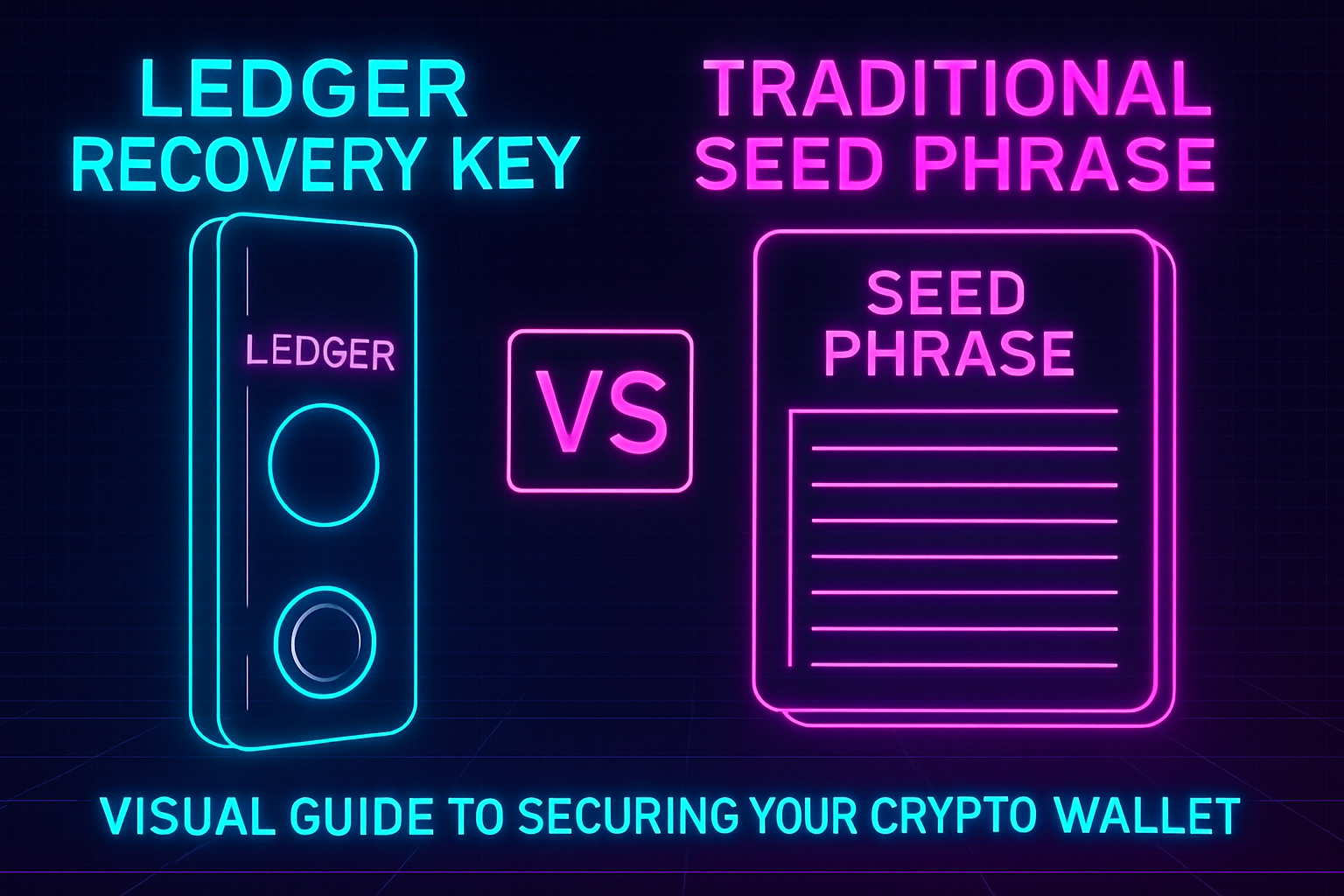Securing your crypto wallet is the cornerstone of digital asset management. Whether you’re a first-time investor or a seasoned trader, understanding the tools that protect your funds is non-negotiable. Two methods dominate the landscape: the traditional seed phrase (also called Secret Recovery Phrase) and the newer Ledger Recovery Key. Both offer distinct approaches to crypto wallet backup, each with its own strengths, weaknesses, and practical considerations. This visual guide breaks down their mechanics and helps you choose the right method for your risk profile.

What Is a Seed Phrase? The Bedrock of Crypto Wallet Backup
A seed phrase is a human-readable string of 12, 18, or 24 words generated when you set up most hardware or software wallets. This phrase acts as a master key to your entire wallet: lose it, and you lose access forever; share it, and you grant full control to anyone who has it.
The underlying mechanism is simple yet powerful. When creating a wallet, your device uses randomness (entropy) to generate private keys, which are then encoded into your seed phrase using industry standards like BIP-39. If disaster strikes, lost device, corrupted storage, you can restore all assets by entering these words into any compatible wallet interface.
- Storage: Typically written on paper or engraved on metal plates for offline safety
- Vulnerability: If someone accesses your seed phrase, they can drain all funds
- Durability: Physical copies are susceptible to fire, water damage, or theft
This approach has become synonymous with self-custody in crypto, simple but unforgiving.
Ledger Recovery Key: PIN-Protected Crypto Backup for Modern Users
The Ledger Recovery Key introduces an extra layer of convenience and security for those who want more than just pen-and-paper protection. Instead of relying solely on memorization or physical copies, Ledger’s solution stores an encrypted version of your 24-word Secret Recovery Phrase inside a tamper-resistant smartcard with an embedded Secure Element chip.
Main features include:
- PIN Protection: Access requires a 4-8 digit PIN; three incorrect attempts trigger an automatic wipe
- NFC Integration: The card communicates wirelessly with supported Ledger devices for seamless recovery
- Tamper Resistance: Hardware-level security makes unauthorized extraction extremely difficult
This approach addresses two major pain points: accidental exposure (since no one can read the words off the card) and user error (no need to manually type out 24 words during stressful recovery situations).
Seed Phrase vs Ledger Recovery Key: Usability & Security
-

Seed Phrase: Universal Compatibility — Works across most crypto wallets supporting BIP-39, enabling recovery on various platforms, not just Ledger devices.
-

Seed Phrase: Manual Handling Risk — Must be written down and stored securely offline; vulnerable to loss, theft, or physical damage if not protected properly.
-

Seed Phrase: No Built-in Access Controls — Anyone with the phrase can access your assets; lacks PIN or biometric protection.
-

Ledger Recovery Key: PIN Protection — Access is secured by a user-chosen PIN; after three incorrect attempts, the device wipes itself to prevent unauthorized access.
-

Ledger Recovery Key: NFC Convenience — Enables quick wallet recovery via NFC with compatible Ledger devices, streamlining the restoration process compared to manual phrase entry.
-

Ledger Recovery Key: Device Dependency — Only works with Ledger’s ecosystem and requires the physical card; loss or damage to the card could limit access unless a seed phrase backup is kept.
-

Ledger Recovery Key: Enhanced Durability — The card is designed to be more robust than paper, but still requires careful physical security to avoid theft or misplacement.
Pitfalls and Practicalities: Seed Phrase Security vs Hardware Wallet Comparison
The debate between traditional seed phrases and PIN-protected crypto backup solutions like the Ledger Recovery Key centers on trade-offs between accessibility, resilience, and user error tolerance.
- If you value absolute independence, the classic seed phrase remains unmatched, compatible across wallets but unforgiving if lost or mishandled.
- If you prefer layered security with usability enhancements, the Ledger Recovery Key offers modern safeguards but ties you more closely to specific hardware ecosystems.
- Breach risk varies: A visible seed phrase is low-tech but high-risk; smartcards reduce exposure but add complexity if lost or stolen.
Your choice should reflect not only technical comfort but also lifestyle factors, travel frequency, likelihood of misplacing items, trust in digital vs physical backups, and how much responsibility you’re willing to shoulder personally.
For high-net-worth individuals, institutions, or those managing multi-signature wallets, combining both approaches is increasingly common. For instance, storing a seed phrase in a secure offline location (like a bank vault or safety deposit box) while using the Ledger Recovery Key for day-to-day accessibility can provide an optimal blend of redundancy and convenience. This hybrid approach minimizes single points of failure and ensures that losing one backup method does not spell disaster for your crypto holdings.
Practical Tips: Maximizing Your Crypto Wallet Backup Security
Regardless of which method you choose, following best practices is essential to avoid costly mistakes. Here are actionable steps to strengthen your crypto wallet backup strategy:
Seed Phrase Security:
- Avoid digital photographs or cloud storage for your seed phrase; physical-only copies significantly reduce remote hacking risks.
- If using metal plates, ensure they are corrosion-resistant and stored in a discreet location.
- Consider splitting the phrase into parts (Shamir’s Secret Sharing) for enhanced resilience, though this adds complexity.
Ledger Recovery Key:
- Memorize your PIN but avoid writing it down near the card itself.
- Treat the card as you would a high-value credit card, store it in a safe place but accessible in emergencies.
- If traveling internationally, be aware of local regulations regarding cryptographic devices and cross-border asset declarations.
Future-Proofing Your Crypto Assets: What’s Next?
The landscape of crypto wallet backup is evolving rapidly. While traditional seed phrases remain universally supported and hardware wallets like Ledger Flex and Stax continue to innovate, there’s growing momentum toward user-friendly solutions that balance security with usability. Smartcards, biometric authentication, and decentralized recovery protocols are all vying to become the next standard. Yet the core principle remains unchanged: Your backup method is only as strong as your weakest link.
If you’re new to crypto or considering upgrading your security setup, weigh these options carefully. The right choice depends on your technical comfort level, risk tolerance, and preferred balance between convenience and independence. For more technical details on how private keys differ from seed phrases, and why both matter, refer to this resource from Ledger: What is a Seed Phrase (Secret Recovery Phrase)?
Clarity and discipline drive lasting returns, choose wisely, back up redundantly, and revisit your security plan regularly as technology evolves.


